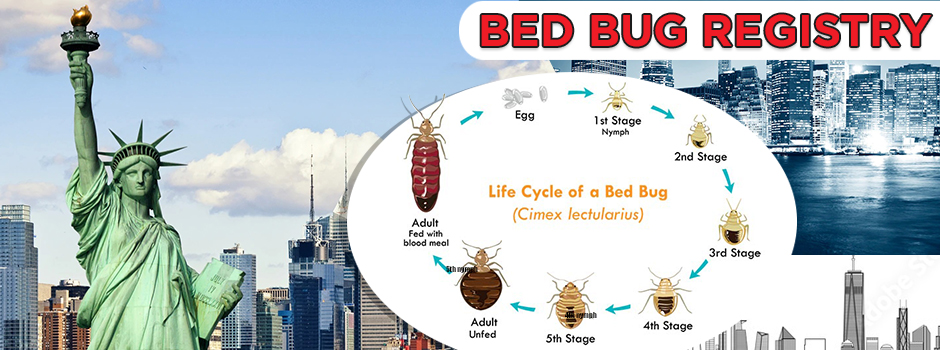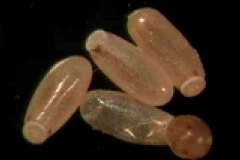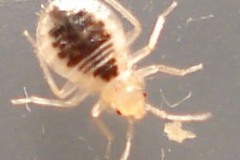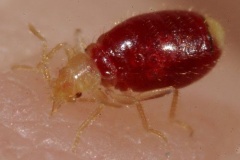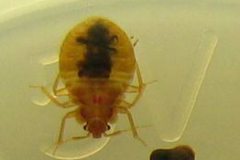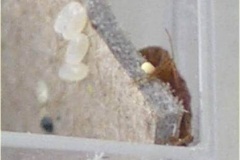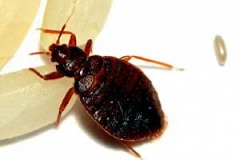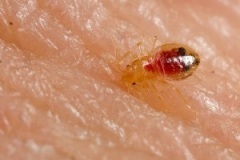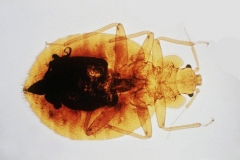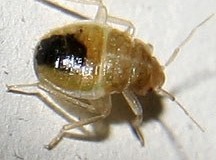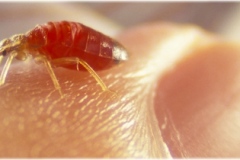Categories
- Bed Bug
- Bed Bug Cream
- BED BUG DATABASE
- Bed Bug Home Remedies
- Bed Bug Oil
- Bed Bug Remedies
- Bed Bug Spray
- Bed Bugs New York
- Bed Bugs Vancouver
- Bed Bugs World
- Bed Bugs American Samoa
- Bed Bugs Canada
- Bed Bugs Guam
- Bed Bugs North Mariana islands
- Bed Bugs Puerto Rico
- Bed Bugs United States
- Bed Bugs Alabama
- Bed Bugs Alaska
- Bed Bugs Arizona
- Bed Bugs Arkansas
- Bed Bugs California
- Bed Bugs Colorado
- Bed Bugs Connecticut
- Bed Bugs Delaware
- Bed Bugs Florida
- Bed Bugs Georgia
- Bed Bugs Hawaii
- Bed Bugs Idaho
- Bed Bugs Illinois
- Bed Bugs Indiana
- Bed Bugs Iowa
- Bed Bugs Kansas
- Bed Bugs Kentucky
- Bed Bugs Louisiana
- Bed Bugs Maine
- Bed Bugs Maryland
- Bed Bugs Massachusetts
- Bed Bugs Michigan
- Bed Bugs Minnesota
- Bed Bugs Mississippi
- Bed Bugs Missouri
- Bed Bugs Montana
- Bed Bugs Nebraska
- Bed Bugs Nevada
- Bed Bugs New Hampshire
- Bed Bugs New Jersey
- Bed Bugs New Mexico
- Bed Bugs New York
- Bed Bugs North Carolina
- Bed Bugs North Dakota
- Bed Bugs Ohio
- Bed Bugs Oklahoma
- Bed Bugs Oregon
- Bed Bugs Pennsylvania
- Bed Bugs Rhode Island
- Bed Bugs South Carolina
- Bed Bugs South Dakota
- Bed Bugs Tennessee
- Bed Bugs Texas
- Bed Bugs Utah
- Bed Bugs Vermont
- Bed Bugs Virgin Islands
- Bed Bugs Virginia
- Bed Bugs Washington
- Bed Bugs Washington DC
- Bed Bugs West Virginia
- Bed Bugs Wisconsin
- Bed Bugs Wyoming
- BedBug Removal
- BedBugs in Michigan
- Canada Bed Bugs
- Do it yourself Bed Bug
- Exterminator Bed Bugs
- Health
- Pest Inspection
- Toronto Bed Bugs
- Welcome to Bed Bugs
Registry Sites List
- Bronx Bed Bug Registry Infestation Maps, Residential And Hotel
- Brooklyn Bed Bug Registry Infestation Maps, Residential And Hotel
- Manhattan Bed Bug Registry Infestation Maps, Residential And Hotel
- Nyc Bed Bug Registry Infestation Maps, Residential And Hotel
- Queens Bed Bug Registry Infestation Maps, Residential And Hotel
- Staten Island Bed Bug Registry Infestation Maps, Residential And Hotel
Recommended Sites
Daily Archives: December 24, 2013
News Links:
Good Night Sleep Tight – Canine Bed Bug Scent Detection Service
How do bed bugs reproduce? A female bed bug only needs to mate once in her lifetime. She is then capable of laying up to 500 eggs, or about 5 per day. After the eggs are laid, it only takes 6 to 20 days for them to hatch. A single female bed bug can increase to over 5,000 bed bugs in just six months.
What does a bed bug look like? Adult bed bugs are almost 1/4" long (about the size of an apple seed), brownish and paper thin and have a flat oval shaped body enabling them to hide in literally any place that they can wedge their bodies into.
The nymphs are a miniature replica of the adult but straw-colored and all but microscopic. They are slightly larger than a pinhead.
The eggs are white and difficult to see on most surfaces without magnification. Individual eggs are about the size of a dust speck. When first laid they are sticky causing them to adhere to surfaces.
How do bed bugs survive? Bed bugs are extremely resilient and the adults can survive up to a year without feeding. This is one reason why infestations are unlikely to diminish by leaving the premises unoccupied. While mainly active at night, they bite people while they are sleeping. Attracted to their host by heat and carbon dioxide, they feed by piercing the skin with an elongated beak through which they draw blood. Engorgement takes about 3 to 10 minutes, yet the person seldom knows they are being bitten. Immediately after feeding they crawl off and reside elsewhere to digest their meal. In 3 to 5 days they will begin searching for another meal.
How do I know if I've been bitten? Symptoms after being bitten vary with the individual. Around 70% of people have no reaction to being bitten by a bed bug, while some people will have a severe, immediate reaction. Symptoms are extremely similar to that of a mosquito bite. Bites will increase as the bed bug population rises. Often multiple bites will appear in "rows" on exposed areas, such as the neck, face, arms and legs.
Where do bed bugs live? Bed bugs prefer to hide close to where they feed. However, if necessary, they will travel to obtain a blood meal. For a small insect, bed bugs can move rapidly over floors, walls, ceilings and other surfaces. Initial infestations tend to be in areas around beds, but the bugs eventually may become scattered throughout the environment, occupying any item that provides access. They can hide in extremely small cracks and crevices making it difficult to locate breeding sites. Bed bugs may also spread to adjacent rooms or apartments.
How do bed bugs spread or travel? It often seems that bed bugs arise from nowhere. The bugs are efficient hitchhikers and are usually transported on luggage, clothing, beds, furniture and other items. This is particularly a problem for hotels, dormitories and apartments where turnover of occupants is constant. Bed bugs can survive, and thrive, in any indoor environment that people occupy for any reason. Once introduced, they often spread throughout a building. The bugs travel from room to room or floor to floor either by crawling or via a person. The level of cleanliness has little to do with most bed bug infestations. Pristine homes and apartments have plenty of hiding places and an abundance of warm-blooded hosts.
How do you get rid of bed bugs? Exterminating an infestation requires persistence and the services of a professional.
Read this article:
Good Night Sleep Tight - Canine Bed Bug Scent Detection Service
Posted in Bed Bugs New Foundland & Labrador
Comments Off on Good Night Sleep Tight – Canine Bed Bug Scent Detection Service
Do bed bugs live inside wooden beds? – Orkin
Schedule Service Call Now or fill out the form below.
Home Ask The Orkin Man bed bugs Do bed bugs live inside wooden beds?
Question: I was wondering if bed bugs can could live within the wood of the bed.
I am doing an interior design project dealing with innovations in furniture in the 1800s, and they had bed bug problems as well.However by changing furniture styles and bedding styles they were able to discourage these bugs almost completely and with much success.I honestly dont know why I am telling you this, and you might not even care but I think that if people of the past could get rid of these bugs by merely changing from wooden beds to metal beds then maybe our population might want to try a simple change like that, if these things are as bad as the media is making them out to be.Now back to the wood question so I can correlate to this story if bed bugs live in wood (wood framed bed) then getting a metal bed would be way worth the while in order to try to get rid of the problem.I would like an answer to my question and some feedback on mycrazy idea if you dont mind.
ANSWER: Bed bugs do not have a preference for wood or metal.They hide in narrow harborages close to where the potential host sleeps. This might be anywhere within several feet of the bed (baseboards, dressers, nightstand). Bed bugs were probably not eliminatedafter the 1800s by changing furniture style, nor will they be eliminated now by changing to metal beds.
Bed bug control is complicated and lengthy, often needing multiple visits.This is definitely not a do-it-yourself project.If you leave one bed bug, the problem will not go away.To schedule a bed bug inspection by a certified Orkin Bed Bug Pest Specialist, call your local Orkin Pest Control Branch office.
Want to find us faster? Just enter your ZIP Code.
Tags: bed bugs
Excerpt from:
Do bed bugs live inside wooden beds? - Orkin
Posted in Bed Bugs Wyoming
Comments Off on Do bed bugs live inside wooden beds? – Orkin
Bed Bugs Plague Another Ohio Firehouse, My Cleaning Products Suggests a Pesticide-Exempt Bed Bug Spray to Help Others …
Columbus, OH (PRWEB) December 24, 2013
Bed bugs infested yet another fire station. And in response to it, My Cleaning Products suggested a pesticide-exempt bed bug spray to help others fighting the same pesky insects.
In a report from dispatch.com published on December 21, 2013, it was specified that a firehouse in Whitehall was the latest victim of those vampire-like pests, My Cleaning Products shared. It detailed that they were discovered on Friday morning when the firefighters showed up in a roll call with bed bug bites.
Particularly, the report said that the critters were discovered in the bunks of the station, MCP relayed. And so, following the discovery of them, it stated that Whitehalls Division of Fire then transferred the sleeping quarters to the basement of the building. In addition, it related that the public was informed about the incident and a bed bug prevention plan was developed.
Here is an excerpt from the report Bed Bugs Infest Whitehall Fire Station by My Cleaning Products.
Bed bugs are becoming a real pain to firehouses. Recently, they were found in the bunks of yet another fire station in Ohio that of Whitehall.
The presence of those pesky insects was discovered last Friday after firefighters showed up for a roll call with bed bug bites all over.
According to My Cleaning Product, bed bugs are so prevalent these days, it seems there's no more place that they couldn't invade. And that, it said, puts everyone at a bigger risk of picking up the pests and getting their homes infested.
But worse, it stated, is that anyone could bring home those critters without knowing it. That's because they are small and are good hitchhikers, it cited.
Because of that, MCP stressed everyone must always be wary of beg bug signs. And to eliminate bed bugs promptly, it asserted that the public must also have a bed bug spray ready. With that, it stated one could prevent them from multiplying and avoid the worst of the problems they could bring.
Originally posted here:
Bed Bugs Plague Another Ohio Firehouse, My Cleaning Products Suggests a Pesticide-Exempt Bed Bug Spray to Help Others ...
Posted in Bed Bugs Ohio
Comments Off on Bed Bugs Plague Another Ohio Firehouse, My Cleaning Products Suggests a Pesticide-Exempt Bed Bug Spray to Help Others …
HPD – Bed Bugs
On November 16, 2011, HPD along with Council Speaker Quinn and Council Member Brewer announced the acquisition of two male bed bug sniffing dogs in an effort to combat bed bug infestations in residential properties. The beagles, Mickey and Nemo, are available to assist a team of four Code Enforcement Inspectors who have been trained to work with the dogs. The dogs will respond to bed bug complaints where the 311 operator has confirmed that the tenant would like to have the inspection performed by a dog; not every complaint where someone indicates that they are available for a dog will get such an inspection. The dogs were trained at an accredited facility to alert by sitting when they detect live bed bugs or viable eggs. The dogs findings will be confirmed by visual inspection before a violation is issued. Although the dogs cannot respond to all bed bug complaints in residential properties, they will serve as a valuable resource in detecting bed bugs in places that are difficult for people to detect, and in cases where there are a small amount of bed bugs or the bed bugs have not yet matured. For more information on the Bed Bug Canine inspections, click here.
The Department of Health and Mental Hygienes (DOHMH) Bed Bug Website at http://nyc.gov/bedbugs provides detailed information for tenants, property owners/agents and homeowners on how bed bugs thrive, how to recognize and inspect for their presence, steps to take to prevent them from infesting a home, how to safely rid an area of bed bugs if they do occur, and how to select and work with a pest management professional. You can also go to the Department of Housing Preservation and Developments (HPD) e-learning on bedbugs, which provides information on the above topics through an interactive format,using anaudio/ visual format.
Left untreated, bed bugs can spread quickly in multi-dwelling housing. Both the housing and health codes require that property owners address infestations promptly. The surest strategies to keep bed bugs from spreading are prevention, early detection and rapid treatment. As a tenant, the first action you should take if you believe that you have bed bugs is to notify your landlord. As a landlord, the first action you should take is to conduct an inspection of the reported condition. Knowing what to look for is key!
Bed Bug Complaints: Enforcement ProtocolHere is how the Citys enforcement protocols work:
ComplaintsWhen a complaint is made to 311 about bed bugs in a residential building, HPD attempts to notify a property owner/representative at the registered phone number about the complaint (For more information on registration,click here.) A housing inspector from HPD may conduct an inspection. The inspector examines places where bed bugs are commonly found, such as on and around mattresses, beds and head boards, as well as other potentially infested areas as directed by the tenant.
ViolationsIf the HPD inspector finds bed bugs, the property owner is issued an HPD Notice of Violation (NOV)(see Sample A)ordering that the condition be addressed.
When a NOV is issued by HPD, the property owner also receives a DOHMH Order of the Commissioner(see Sample B).The Commissioners order tells property owners in more detail what the requirements for addressing the bed bug problem are, including:
Inspect the apartment(s) cited for bed bugs.
If you find a bed bug infestation in the apartment(s), inspect all units adjacent to, above and below the infested units, as well as all common areas; and retain the services of a pest management professional certified and registered by the New York State Department of Environmental Conservation to take all measures necessary to remove bed bug infestationwhere found.
Keep a record of all actions taken in compliance with the Order.
Excerpt from:
HPD - Bed Bugs
Posted in Bed Bugs New York
Comments Off on HPD – Bed Bugs
Get Rid of Bed Bugs | Kill Bed Bugs and Mites in the Wash
The Cedar Bug-Free Solution
Cedar Bug-Free Laundry Additive is designed to kill bed bugs in your bed sheets, clothing, etc. Eliminating bed bugs from your bedding and clothing is a critical step in ending their infestation. Bed bugs infest your bedding and clothing and continue biting while you are asleep or awake, even away from your home. They are commonly carried on clothing from place to place thus spreading their infestations to other rooms, furniture, cars, houses, even to your workplace.
There is a lot of controversy surrounding the hot water/clothes dryer temperature which will kill bed bugs, but it is a fact that bed bugs attach themselves to bed sheets, pillow cases, blankets, clothing and any other fabric material. The professionals that specialize in laundering clothing that has been exposed to bed bugs tell us that bed bugs can be killed by exposure to heat, but they must be exposed to a temperature of at least 130 F for a minimum of 35 minutes. This means that the water in the washing machine must be well above 130 F because the water cools down immediately as it hits the clothes and the tub inside the washer. The same concept applies to the dryer; the wet clothes take a very long time to heat up. The problem is compounded by the fact that residential hot water rarely exceeds 130 F, and then you have all those delicate items that must be washed in cold or warm water. To this end, you need to wash ALL your bedding and clothing often using Cedar Bug-Free Laundry Additive, which will kill the bed bugs in cold or hot water but not harm or stink-up your clothes.
Tip: Many of our customers have found that adding one ounce of Cedar Bug-Free Laundry Additive per gallon of mop water kills bed bugs and mites on their floor. Clean your floors and kill the bugs, all in one easy step! Read the article Other Uses for Cedar Bug-Free Laundry Additive to learn about other uses for this product.
Cedar Bug-Free Laundry Additive is formulated from all natural food grade ingredients that are Generally Recognized As Safe (GRAS) - 85% pure Eastern Red Cedar Oil and 15% Ethyl Lactate. There are no artificial fragrances, colorants or preservatives and no animal by-products or harmful animal testing.
Eastern Red Cedar Oil is extracted from a species of juniper found in North America east of the Great Plains called Juniperus virginiana. The oil is distilled from the trunk and branches, and is considered safe by the US FDA as a food additive.
Ethyl Lactate is an emulsifier made from biological sources and is found naturally in small quantities in a wide variety of foods including wine, chicken, and various fruits.
Go here to read the rest:
Get Rid of Bed Bugs | Kill Bed Bugs and Mites in the Wash
Posted in Bed Bugs Hawaii
Comments Off on Get Rid of Bed Bugs | Kill Bed Bugs and Mites in the Wash

 Residence
Residence  Location
Location 
